Themed collection Earth Abundant Element Compounds in Homogeneous Catalysis

Earth abundant element compounds in homogeneous catalysis
Welcome to this themed issue of Dalton Transactions in the area of earth abundant element (EAE) compounds in homogeneous catalysis.

Dalton Trans., 2015,44, 12027-12028
https://doi.org/10.1039/C5DT90105G
Aza-nickelacycle key intermediate in nickel(0)-catalyzed transformation reactions
Oxidative cyclization of alkynes and imines with nickel(0) is a key step in multicomponent coupling and cycloaddition reactions to give nitrogen-containing organic compounds.
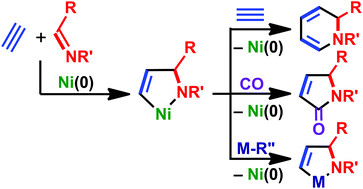
Dalton Trans., 2015,44, 12060-12073
https://doi.org/10.1039/C5DT00640F
Recent developments in alkene hydro-functionalisation promoted by homogeneous catalysts based on earth abundant elements: formation of C–N, C–O and C–P bond
This perspective provides an overview of the recent advancements in earth abundant element-based catalysts for alkene hydrofunctionalisation.
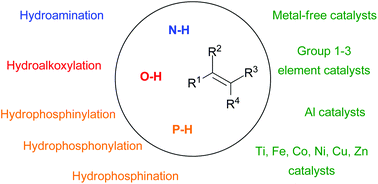
Dalton Trans., 2015,44, 12029-12059
https://doi.org/10.1039/C5DT00280J
Ligand free copper(I)-catalyzed synthesis of diaryl ether with Cs2CO3via a free radical path
Complexes [Cu(I)(2,4-dimethylphenoxy)2]− (A) and [Cu(II)(2,4-dimethylphenoxy)2(p-tolyl)]− (B) were observed by in situ ESI-MS analysis of the ligand free copper(I)-catalyzed C–O coupling reaction using Cs2CO3 under the catalytic reaction conditions.

Dalton Trans., 2015,44, 12086-12090
https://doi.org/10.1039/C5DT00151J
Catalytic aerobic oxidation of phenols to ortho-quinones with air-stable copper precatalysts
Air-stable Cu(II) species are competent precatalysts in the aerobic oxygenation of phenols into ortho-quinones.

Dalton Trans., 2015,44, 12094-12097
https://doi.org/10.1039/C5DT00822K
Alkali metal-mediated dehydrocoupling of Me2NH·BH3
Bis(trimethylsilyl)amide derivatives of the group 1 elements (Li, Na, K) are competent pre-catalysts for the dehydrocoupling of Me2NH·BH3via the formation of intermediates containing [H3BNMe2BH2Me2N]− anions.

Dalton Trans., 2015,44, 12078-12081
https://doi.org/10.1039/C5DT00178A
Cobalt-catalyzed ammonia borane dehydrocoupling and transfer hydrogenation under aerobic conditions
Simple cobalt compounds engage in ammonia borane dehydrocoupling and transfer hydrogenation.
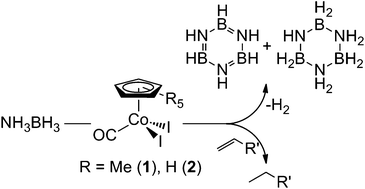
Dalton Trans., 2015,44, 12074-12077
https://doi.org/10.1039/C5DT00108K
Ring-opening polymerization of cyclohexene oxide using aluminum amine–phenolate complexes
Al(III) catalysts at concentrations as low as 0.001% ring-open cyclohexene oxide to yield high molecular weight polyether with narrow dispersity.
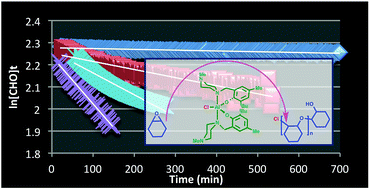
Dalton Trans., 2015,44, 12098-12102
https://doi.org/10.1039/C5DT00220F
Regioselective synthesis of highly functionalized alkenylboronates by Cu-catalyzed borylation of propargylic silylalkynes
High regioselectivity was achieved in the Cu(I)-catalyzed borylation of internal propargylic alkynes with a silyl substituent to afford multifunctionalized alkenylboron compounds.

Dalton Trans., 2015,44, 12091-12093
https://doi.org/10.1039/C5DT00144G
Selective hydration of nitriles to amides catalysed by PCP pincer supported nickel(II) complexes
Nickel(II) hydroxo compounds supported by an electron rich PCP pincer ligand are active catalysts for the selective hydration of a variety of nitriles at low catalyst loadings and mild conditions.
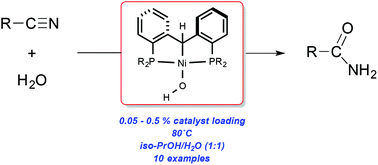
Dalton Trans., 2015,44, 12082-12085
https://doi.org/10.1039/C4DT03902E
New findings and the current controversies for water oxidation by a copper(II)-azo complex: homogeneous or heterogeneous?
New findings for the water-oxidizing activity of [(L)CuII(NO3)], (L = (E)-3-(pyridin-2-yldiazenyl)naphthalen-2-ol (HL)) under both electro-water oxidation conditions and in the presence of cerium(IV) ammonium nitrate are reported.
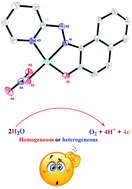
Dalton Trans., 2015,44, 15435-15440
https://doi.org/10.1039/C5DT01836F
Titanium(IV) catalysts with ancillary imino-spiroketonato ligands: synthesis, structure and olefin polymerization
New titanium(IV) complexes having two bidentate β-iminoethyl-spiro[4,5]decan-6-onato ligands with various N-aryl substituents have been synthesized.
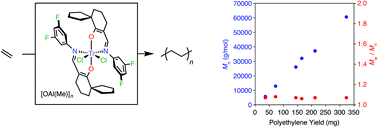
Dalton Trans., 2015,44, 12265-12272
https://doi.org/10.1039/C5DT01104C
Titanium pyridonates for the homo- and copolymerization of rac-lactide and ε-caprolactone
A series of titanium pyridonate complexes have been synthesized under very mild reaction conditions from a common precursor, Ti(NMe2)4. These complexes have been explored as initiators for the ring-opening polymerization of rac-lactide and ε-caprolactone and have proven to be competitive with leading titanium initiators.
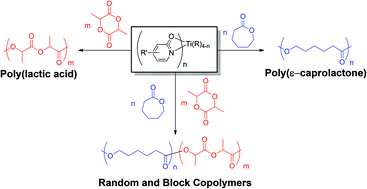
Dalton Trans., 2015,44, 12411-12419
https://doi.org/10.1039/C5DT01162K
Bis(phenolate)amine-supported lanthanide borohydride complexes for styrene and trans-1,4-isoprene (co-)polymerisations
New bis(phenolate)amine-supported neodymium borohydride complexes and their previously reported samarium analogues were tested as catalysts for the polymerisation of styrene and isoprene.

Dalton Trans., 2015,44, 12312-12325
https://doi.org/10.1039/C5DT00252D
Olefin polymerisation catalysts: when perfection is not enough
Despite decades of thorough mechanistic investigations, it is still hard to predict the activity of a novel olefin polymerisation catalyst, even when the precursor is a well-defined molecular entity. Kinetic studies using quenched-flow methods can help to understand why.
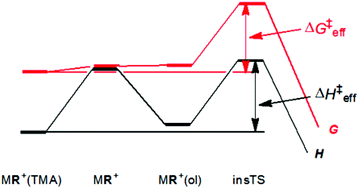
Dalton Trans., 2015,44, 12304-12311
https://doi.org/10.1039/C5DT01514F
Ring-opening polymerization of rac-lactide and α-methyltrimethylene carbonate catalyzed by magnesium and zinc complexes derived from binaphthyl-based iminophenolate ligands
Magnesium and zinc complexes derived from binaphthyl-based iminophenolate ligands efficiently initiated the ring-opening polymerization of rac-lactide and α-MeTMC, with the highest heteroselectivity (Pr = 0.84) or regioselectivity (Xreg = 0.98) obtained for the zinc complex.
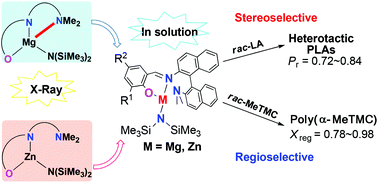
Dalton Trans., 2015,44, 12420-12431
https://doi.org/10.1039/C5DT00158G
Synthesis, structural studies, kinetic stability, and oxidation catalysis of the late first row transition metal complexes of 4,10-dimethyl-1,4,7,10-tetraazabicyclo[6.5.2]pentadecane
Fe/Mn complexes of ethylene cross-bridged homocyclen catalyze oxygen atom transfer and hydrogen abstraction.
![Graphical abstract: Synthesis, structural studies, kinetic stability, and oxidation catalysis of the late first row transition metal complexes of 4,10-dimethyl-1,4,7,10-tetraazabicyclo[6.5.2]pentadecane](/en/Image/Get?imageInfo.ImageType=GA&imageInfo.ImageIdentifier.ManuscriptID=C5DT00742A&imageInfo.ImageIdentifier.Year=2015)
Dalton Trans., 2015,44, 12210-12224
https://doi.org/10.1039/C5DT00742A
Catalytic catechol oxidation by copper complexes: development of a structure–activity relationship
High activity for the catalytic oxidation of 3,5-di-tert-butylcatechol was achieved with complexes of ligands that stabilize the biomimetic CuII μ-thiolate complex, hinting at a similarity with the required Cu-oxo intermediates.
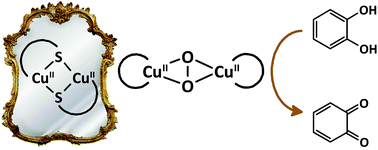
Dalton Trans., 2015,44, 12196-12209
https://doi.org/10.1039/C5DT01041A
P,O-Phosphinophenolate zinc(II) species: synthesis, structure and use in the ring-opening polymerization (ROP) of lactide, ε-caprolactone and trimethylene carbonate
Structurally diverse phosphinophenolate Zn(II) heteroleptic and homoleptic compounds are reported, some of which efficiently mediate the controlled ROP of lactide, ε-caprolactone and trimethylene carbonate under living and immortal conditions.
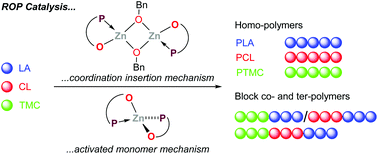
Dalton Trans., 2015,44, 12376-12387
https://doi.org/10.1039/C5DT00458F
Aluminium-catalysed intramolecular hydroamination of aminoalkenes: computational perusal of alternative pathways for aminoalkene activation
Rival mechanistic pathways for C![[double bond, length as m-dash]](https://www.rsc.org/images/entities/char_e001.gif) C bond activation in aluminium-catalysed hydroamination: computational mechanistic analysis reveals that a catalytically relevant [(pda)Al(NHR)] compound promotes hydroamination through a stepwise σ-bond insertive mechanism with turnover-limiting aminolysis.
C bond activation in aluminium-catalysed hydroamination: computational mechanistic analysis reveals that a catalytically relevant [(pda)Al(NHR)] compound promotes hydroamination through a stepwise σ-bond insertive mechanism with turnover-limiting aminolysis.
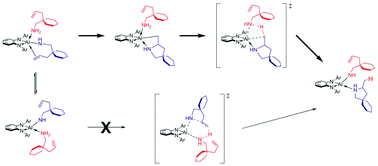
Dalton Trans., 2015,44, 12169-12179
https://doi.org/10.1039/C5DT00121H
Titanocene(III) complexes with 2-phosphinoaryloxide ligands for the catalytic dehydrogenation of dimethylamine borane
A study of the dehydrogenation of dimethylamine borane using different titanocene(III) complexes with 2-phosphinoaryloxide ligands is presented.
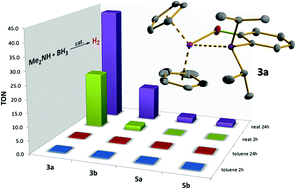
Dalton Trans., 2015,44, 12103-12111
https://doi.org/10.1039/C5DT00275C
Magnesium amino-bis(phenolato) complexes for the ring-opening polymerization of rac-lactide
Magnesium complexes capable of rac-lactide polymerization in both the melt and in solution at elevated temperatures were synthesized. End-group analysis by MALDI-TOF showed both linear and cyclic PLA.
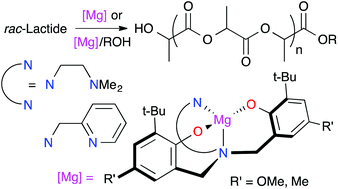
Dalton Trans., 2015,44, 12365-12375
https://doi.org/10.1039/C5DT00236B
Covalent attachment of diphosphine ligands to glassy carbon electrodes via Cu-catalyzed alkyne-azide cycloaddition. Metallation with Ni(II)
Covalent tethering of a P2N2 ligand to a planar, azide-terminated glassy carbon electrode surface was accomplished using a CuI-catalyzed “click” reaction, followed by metallation with NiII.

Dalton Trans., 2015,44, 12225-12233
https://doi.org/10.1039/C5DT00162E
Stoichiometric and catalytic Si–N bond formation using the p-block base Al(NMe2)3
The aluminium reagent Al(NMe2)3 acts as a stoichiometric or catalytic reagent in dehydrogenic Si–N bond formation using amines and silanes. The observed catalytic rate law suggests a mechanism involving the silane component in the deprotonation of the amine.

Dalton Trans., 2015,44, 12112-12118
https://doi.org/10.1039/C5DT00662G
Synthesis and Lewis acidity of fluorophosphonium cations
A series of fluorophosphonium salts, [R3PF][X] (R = alkyl or aryl; X = FB(C6F5)3, [B(C6F5)4]), have been prepared by reactions of phosphine/borane frustrated Lewis pairs (FLPs) with XeF2 or difluorophosphoranes with [Et3Si][B(C6F5)4].
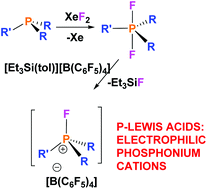
Dalton Trans., 2015,44, 12256-12264
https://doi.org/10.1039/C5DT00217F
Comparing a series of 8-quinolinolato complexes of aluminium, titanium and zinc as initiators for the ring-opening polymerization of rac-lactide
The preparation, characterization and properties of a series of 8-hydroxy quinolinolate complexes of Ti(IV), Al(III) and Zn(II) are presented. The complexes are active initiators for rac-lactide polymerizations: their performances are compared.
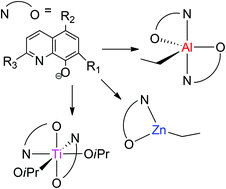
Dalton Trans., 2015,44, 12326-12337
https://doi.org/10.1039/C5DT00192G
Reactions of phenylacetylene with nickel POCOP-pincer hydride complexes resulting in different outcomes from their palladium analogues
Nickel POCOP-pincer hydride complexes react with phenylacetylene to afford alkenyl complexes whereas the palladium analogues give alkynyl complexes.
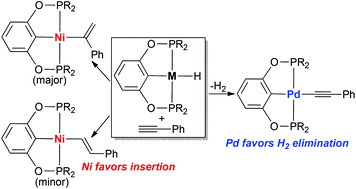
Dalton Trans., 2015,44, 12128-12136
https://doi.org/10.1039/C5DT00161G
Vanadyl calix[6]arene complexes: synthesis, structural studies and ethylene homo-(co-)polymerization capability
Use of various combinations of [VOCl3], LiOt-Bu and p-tert-butylcalix[6]areneH6 affords vanadyl complexes capable of ethylene homo-(co-)polymerization.
![Graphical abstract: Vanadyl calix[6]arene complexes: synthesis, structural studies and ethylene homo-(co-)polymerization capability](/en/Image/Get?imageInfo.ImageType=GA&imageInfo.ImageIdentifier.ManuscriptID=C5DT00376H&imageInfo.ImageIdentifier.Year=2015)
Dalton Trans., 2015,44, 12292-12303
https://doi.org/10.1039/C5DT00376H
Synthesis of cyclic polyesters: effects of alkoxy side chains in salicylaldiminato tin(II) complexes
A new salicylaldiminato tin(II) catalyst system having alkoxy side chains has been developed and shown to effectively polymerize L-lactide and ε-caprolactone giving cyclic PLA and cyclic PCL, respectively.
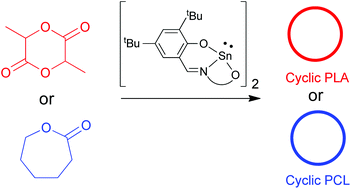
Dalton Trans., 2015,44, 12357-12364
https://doi.org/10.1039/C5DT00139K
Ethylene polymerization by the thermally unique 1-[2-(bis(4-fluoro phenyl)methyl)-4,6-dimethylphenylimino]-2-aryliminoacenaphthylnickel precursors
Finely tuned substituents within ligands control the catalytic performance of the corresponding complex precursors, tailoring resulting polyethylenes.
![Graphical abstract: Ethylene polymerization by the thermally unique 1-[2-(bis(4-fluoro phenyl)methyl)-4,6-dimethylphenylimino]-2-aryliminoacenaphthylnickel precursors](/en/Image/Get?imageInfo.ImageType=GA&imageInfo.ImageIdentifier.ManuscriptID=C5DT00052A&imageInfo.ImageIdentifier.Year=2015)
Dalton Trans., 2015,44, 12282-12291
https://doi.org/10.1039/C5DT00052A
Iron catalysed Negishi cross-coupling using simple ethyl-monophosphines
Reported is a rare example of the use of monophosphines in iron catalysed Negishi cross-coupling. Substrate scope in terms of alkyl bromide and diaryl zinc reagent is explored.
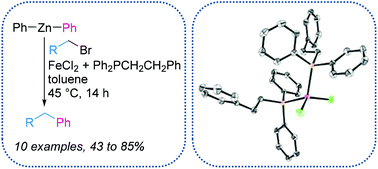
Dalton Trans., 2015,44, 12189-12195
https://doi.org/10.1039/C5DT00112A
Reaction mechanism for the highly efficient catalytic decomposition of peroxynitrite by the amphipolar iron(III) corrole 1-Fe
The amphipolar iron(III) corrole 1-Fe is one of the most efficient catalysts for the decomposition of peroxynitrite, the toxin involved in numerous diseases.
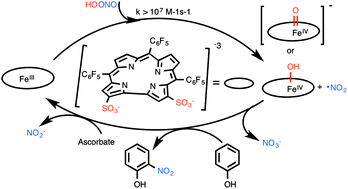
Dalton Trans., 2015,44, 12234-12243
https://doi.org/10.1039/C5DT00086F
Homochiral coordination cages assembled from dinuclear paddlewheel nodes and enantiopure ditopic ligands: syntheses, structures and catalysis
A series of homochiral (Cu2)2L4 lantern cages have been synthesized, which can promote cyclopropanation with up to 99 : 1 diastereoselectivity.
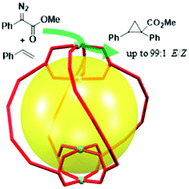
Dalton Trans., 2015,44, 12180-12188
https://doi.org/10.1039/C4DT03782K
Tetraphenolate niobium and tantalum complexes for the ring opening polymerization of ε-caprolactone
Reaction of the pro-ligands α,α,α′,α′-tetra(3,5-di-tert-butyl-2-hydroxyphenyl-p-(or -m-)xylene-para-(or -meta-)tetraphenol with [MCl5] (M = Nb, Ta) or [Nb(O)Cl3(NCMe)2] afforded complexes capable of the ROP of e-caprolactone at high temperature.
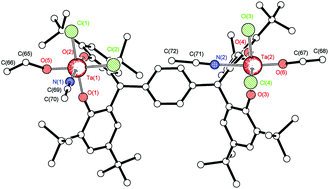
Dalton Trans., 2015,44, 12349-12356
https://doi.org/10.1039/C5DT00272A
(Iminophosphoranyl)(thiophosphoranyl)methane rare-earth borohydride complexes: synthesis, structures and polymerization catalysis
The {CH(PPh2![[double bond, length as m-dash]](https://www.rsc.org/images/entities/char_e001.gif) NSiMe3)(PPh2
NSiMe3)(PPh2![[double bond, length as m-dash]](https://www.rsc.org/images/entities/char_e001.gif) S)}− ligand has been used for the synthesis of divalent and trivalent rare-earth borohydride complexes. These compounds enable the ring-opening polymerization (ROP) of ε-caprolactone (CL) and trimethylene carbonate (TMC).
S)}− ligand has been used for the synthesis of divalent and trivalent rare-earth borohydride complexes. These compounds enable the ring-opening polymerization (ROP) of ε-caprolactone (CL) and trimethylene carbonate (TMC).
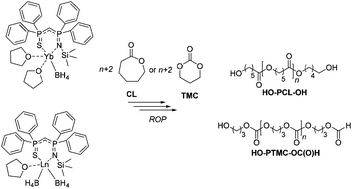
Dalton Trans., 2015,44, 12338-12348
https://doi.org/10.1039/C4DT04034A
Ethylene polymerisation and ethylene/norbornene copolymerisation by using aryloxo-modified vanadium(V) complexes containing 2,6-difluoro-, dichloro-phenylimido complexes
V(N-2,6-X2C6H3)Cl2(O-2,6-R2C6H3) (X = Cl, F; R = Me, F) showed remarkable activity in ethylene polymerisation and the copolymerisation with norbornene in the presence of Et2AlCl.
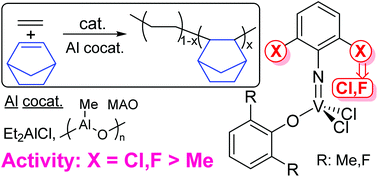
Dalton Trans., 2015,44, 12273-12281
https://doi.org/10.1039/C4DT04026K
Intermolecular hydroaminoalkylation of alkenes and dienes using a titanium mono(formamidinate) catalyst
A titanium mono(formamidinate) complex catalyzes the hydroaminoalkylation of unactivated, sterically demanding, disubstituted alkenes and styrenes with secondary amines.

Dalton Trans., 2015,44, 12149-12168
https://doi.org/10.1039/C4DT03916E
Metallacyclic yttrium alkyl and hydrido complexes: synthesis, structures and catalytic activity in intermolecular olefin hydrophosphination and hydroamination
Yttrium complexes – efficient precatalysts for intermolecular olefin hydrophosphination and hydroamination.
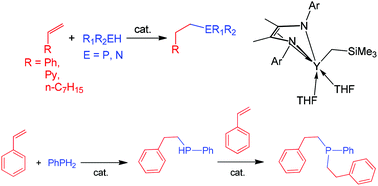
Dalton Trans., 2015,44, 12137-12148
https://doi.org/10.1039/C5DT00129C
Mono-, di- and tetra-zinc complexes derived from an amino-benzotriazole phenolate ligand containing a bulkier N-alkyl pendant arm: synthesis, structure and catalysis for ring-opening polymerization of cyclic esters
Tetranuclear alkoxide 3 with a saddle-shaped Zn4O4 conformation was an active initiator for living ROP of ε-caprolactone and β-butyrolactone.
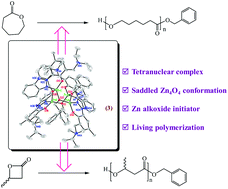
Dalton Trans., 2015,44, 12401-12410
https://doi.org/10.1039/C4DT02906B
Catalytic behaviour in the ring-opening polymerisation of organoaluminiums supported by bulky heteroscorpionate ligands
A series of alkyl organoaluminium complexes based on bulky heteroscorpionate ligands were designed as catalysts for the ring-opening polymerisation of cyclic esters.
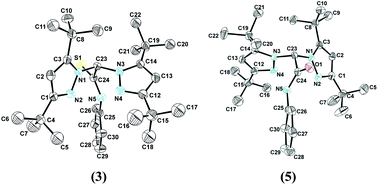
Dalton Trans., 2015,44, 12388-12400
https://doi.org/10.1039/C4DT03475A
Dinuclear first-row transition metal complexes with a naphthyridine-based dinucleating ligand
A series of “diamond-core” bridged dinuclear first-row transition metal complexes with the dinucleating ligand DPFN are prepared and characterized.
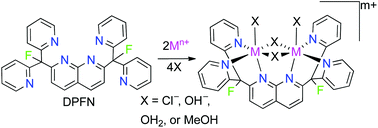
Dalton Trans., 2015,44, 12244-12255
https://doi.org/10.1039/C4DT02727B
Exploring the decomposition pathways of iron asymmetric transfer hydrogenation catalysts
An iron ATH catalyst is slowly transformed into an inactive, achiral iron complex under catalytic conditions.
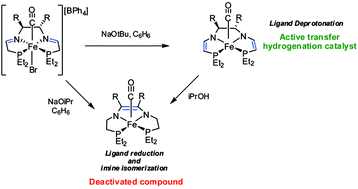
Dalton Trans., 2015,44, 12119-12127
https://doi.org/10.1039/C4DT02799J
About this collection
Guest Edited by Professors Philip Mountford (University of Oxford), Laurel L. Schafer (University of British Columbia) and Warren E. Piers (University of Calgary), this themed issue showcases the latest research in the development of highly active and selective homogeneous catalysts utilizing earth abundant elements from across the periodic table.